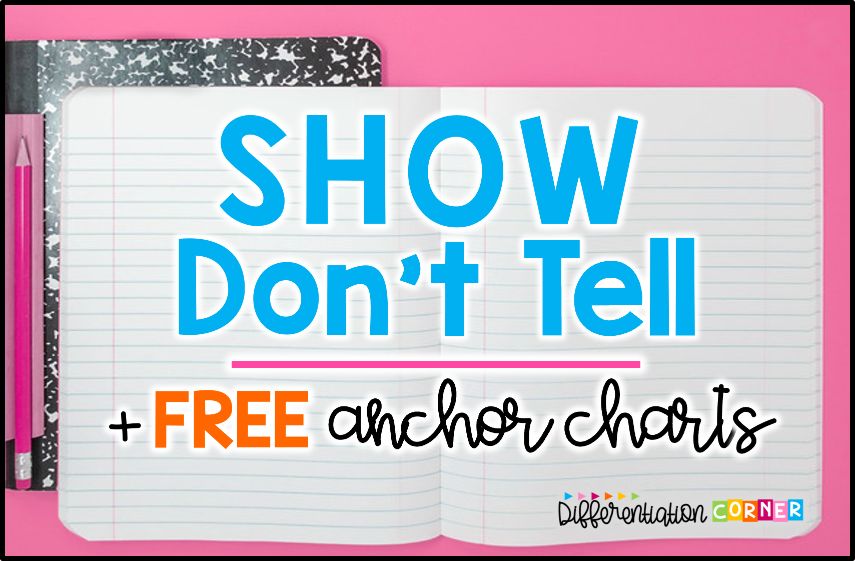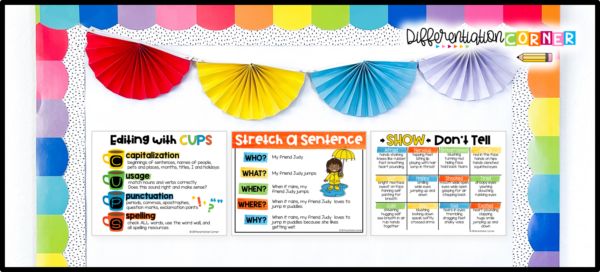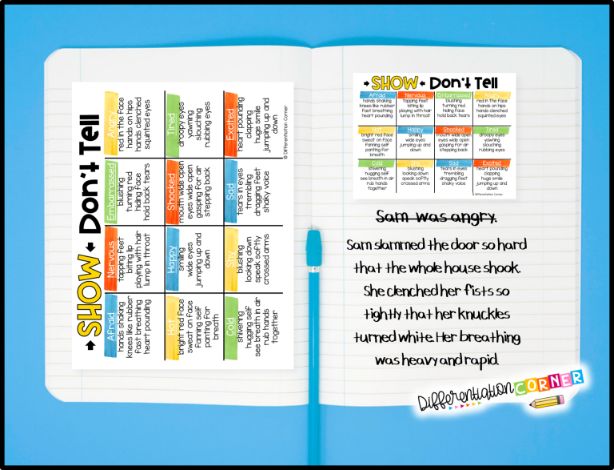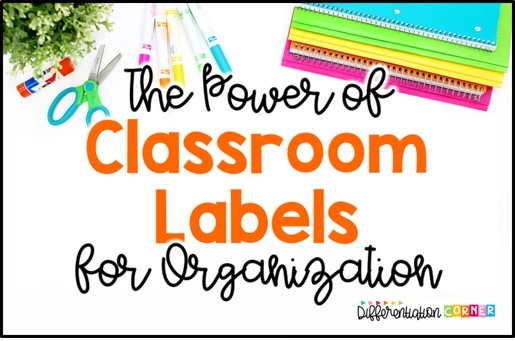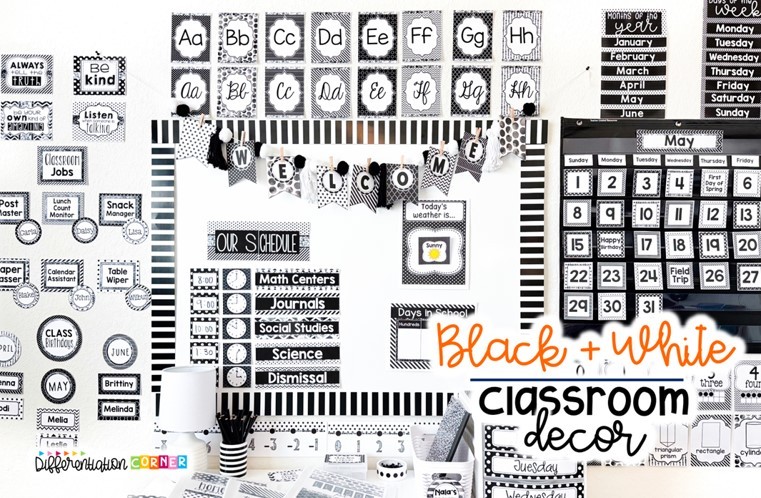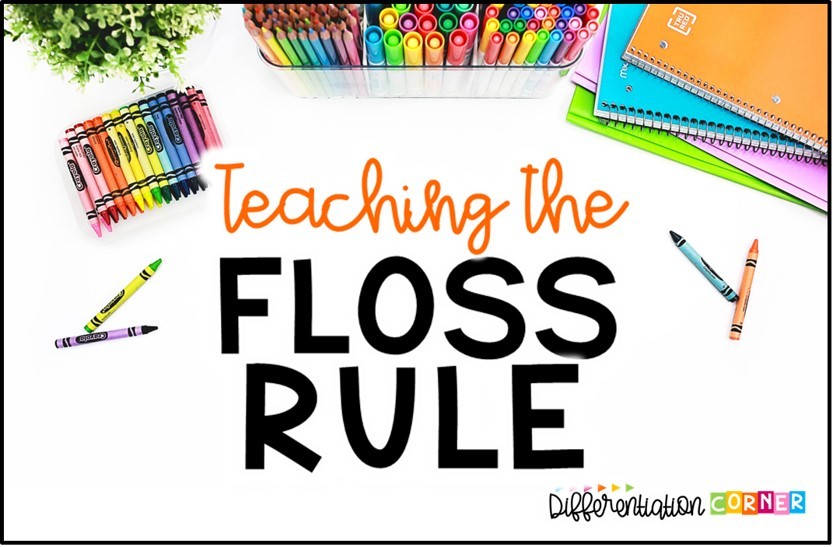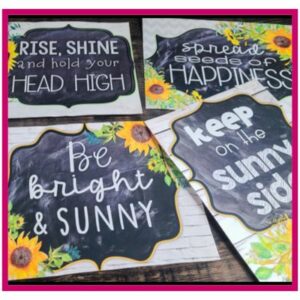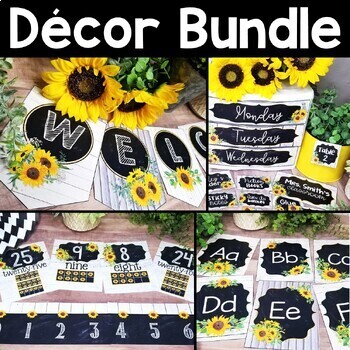Teaching writing in elementary is pretty complex because there are so many strategies to teach! My students often struggle with writing boring sentences. So I really focus my energy on mini lessons to help them make their writing more interesting. Today on the blog let’s talk about how to teach students the writing strategy Show Don’t Tell which is also called Show Not Tell. Plus free writing anchor charts to help teach your students about Show, Don’t Tell and other writing strategies!
What is a quick definition of Show Don’t Tell?
Show Don’t Tell is a writing strategy that helps readers actually experience the scene they’re reading about due to the descriptive language and imagery used by the author.

Here’s How I explain Show Don’t Tell to My Students
Digging a little deeper, what exactly does it mean to “Show, Not Tell”? It means that instead of simply stating a fact or emotion, our elementary writers are learning to use descriptive language and vivid imagery to paint a picture for their reader. As good authors we want to make readers feel like they are experiencing the story or scene, rather than just telling the reader what that moment was like. This is usually used in narrative writing.
What is an example of Show Don’t Tell?
Instead of writing this boring sentence: Samantha was angry. Good authors try to show the character’s anger through actions and body language. A more “Show Not Tell” way of writing might be something like, “Samantha slammed the door so hard that the entire house shook. She clenched her fists so tightly that her knuckles turned white. Her breathing was heavy and rapid, and she could feel her blood boiling.” The reader infers that the character is angry.
By using descriptive language and showing Samantha’s actions and emotions, the reader can picture and feel her anger instead of just being told about her anger.
Instead of just telling our reader “the sky was beautiful,” a good author might write “the sky was painted with with pink and orange as the sun set behind the mountains.” By describing the colors and imagery, you create a more vivid and engaging scene for the reader.
Showing, not telling, also applies to character traits and character development in elementary writing. Instead of telling readers that a character is brave, have your students show the reader bravery through their character’s actions. For example, a good author might describe a scene where a character runs into a burning building to save a child, or stands up to a bully to protect a friend.
What are the best examples of Show Don’t Tell?
- Tell: Henry stormed out of the room.
- Show: “That’s it!” Henry shouted as he loudly stomped across the floor. He threw his hands above his head as he stormed out the door.
- Tell: Julie had been crying.
- Show: Her eyes were puffy and red. She was still sniffling and had a pile of used tissues sitting next to her.
- Tell: Benji was excited to see his owner.
- Show: Benji ran as fast as he could to the door to greet Tom. He jumped up and down and reached up dramatically with his paws.
Show Don’t Tell Writing Exercise: Have Students Act Out the Scene
This is my favorite Show, Don’t Tell writing exercise! Act it out! Write a boring, telling sentence on the board, like “Sherry is excited.” Pick a student that is into acting and pull them into the hallway. Tell them to act like they just got a new puppy, won a trip to Disneyland, or something else that would make them excited. Then have them go to the front of the class and act out what it looks like when they get excited. (Think: huge smile, wide eyes, jumping up and down, clapping their hands, etc.)
You can do this with different emotions and different students.

Here are some ideas for Show Don’t Tell writing emotions:
Aaron was shocked.
Daniele was sad.
Carl felt happy.
Kashvi started to feel irritated.
Show Don’t Tell Writing Exercise: Class Created Anchor Charts
During or after the above activity, create a Show, Not Tell anchor chart with tell on one side and show on the other. Record the ideas the students came up with for how to Show, Not Tell emotions. Students love to feel like they’ve had a hand in creating these! Then you can hang your anchor chart somewhere in the room for them to reference. TIP: Take a picture of your large handmade anchor chart and print it out small enough for interactive notebooks or any other size you may need!
These free writing anchor charts are great for showing students examples of Show, Don’t Tell.
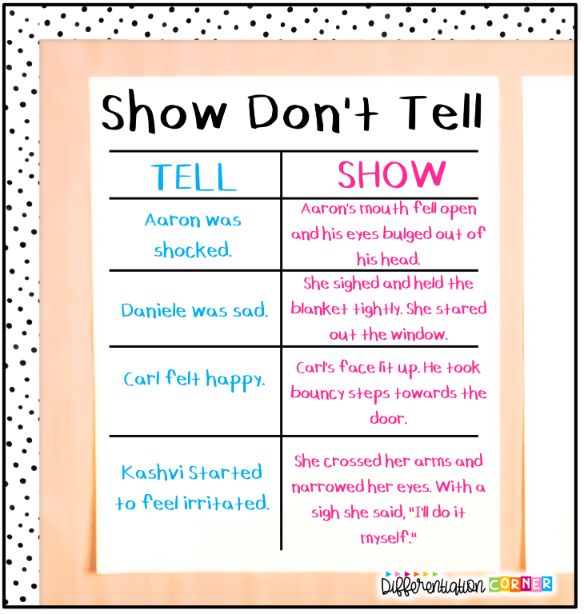
What do students need to know before I teach Show Don’t Tell?
In my opinion, these are writing strategies that your students should know before you dive into Show Not Tell. Your students will be able to incorporate these writing skills into this new strategy and understand some of the language a little easier even if they didn’t quite master theses skills.
- Descriptive language: Use adjectives and adverbs to describe character’s actions and emotions, and story settings.
- Strong Verbs: precise words help students paint an accurate picture in the readers mind.
- Sensory details: Think 5 senses here. Use descriptions of what characters see, hear, feel, taste, and smell to create a more vivid scene.
- Dialogue: Use dialogue to reveal character traits and emotions.
- Action: Use character actions and body language to reveal emotions and personality traits.
- Its important to teach your students that there isn’t just one right way to Show, Don’t Tell a scene in writing. This is a creative writing strategy that is a lot like art and depends on personal taste.
- Sanity saving tip: Use anchor charts so students can remember examples of show vs tell examples, and examples of other writing strategies you want them to use like strong verbs and sensory details. Most students can use anchor charts to spark memories of your lesson independently, so you can work with your struggling writers.
What is the rule of Show Don’t Tell?
Show Don’t Tell is a writing strategy or skill, not a rule, that allows the reader to experience details of a story through actions, sensory details, or the characters’ emotions, instead of the author’s description of events. In my opinion, teachers should stray away from using the term “rule.” There are SO MANY exceptions to academic rules. In spelling, I use the term spelling pattern.
HOW DO YOU SHOW AND NOT TELL IN AN ESSAY?
- Use the character’s five senses
- Use strong verbs
- Be specific with details
- Use dialogue
- Focus on actions
Showing, not telling, is a good writing strategy for elementary writers. Students learn what it means to write interesting sentences and paint pictures in their reader’s minds. Don’t forget to grab these free writing anchor charts to help you teach Show, Not Tell! What other writing strategies do you love teaching?







